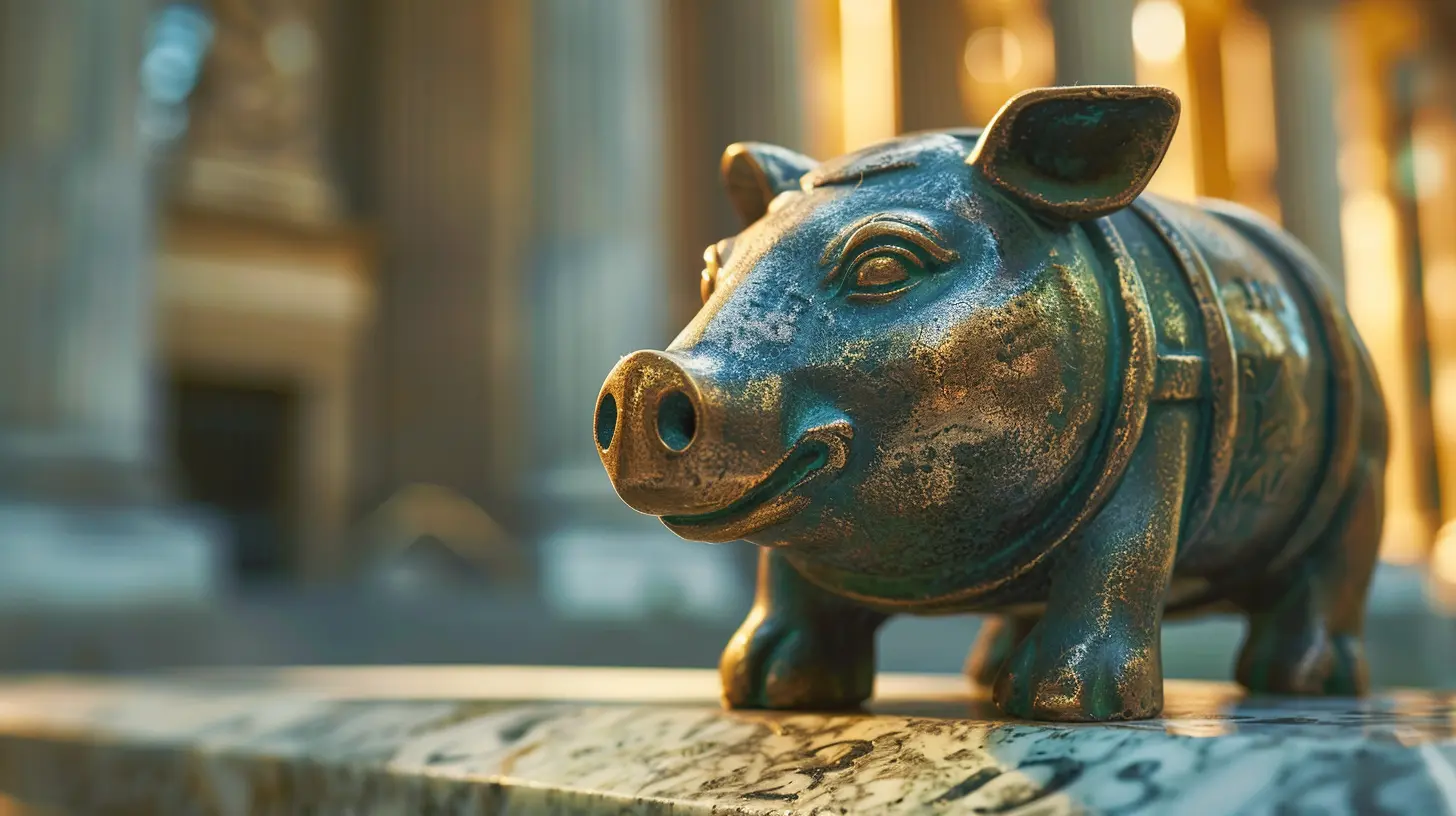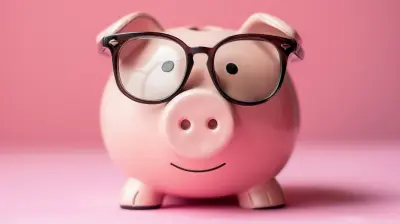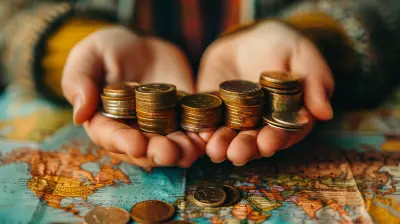Looking at Bank Lending Practices as a Sign of Economic Trends
12 July 2025
Ever feel like understanding the economy is like trying to read ancient hieroglyphics in the dark—with sunglasses on? You're not alone. But what if I told you there's a secret decoder ring tucked away in your local bank’s loan office? Yep, bank lending practices. These low-key financial habits offer surprisingly loud clues about where the economy's headed. So, grab a snack, get comfy, and let’s break it all down—without the finance jargon headache.
The Economy’s Mood Ring? It Might Be Your Bank
Okay, imagine the economy as a moody teenager. Sometimes it's booming with energy (hello, recovery!), and other times it's sulking in its room (recession vibes). One of the best ways to get a glimpse of its current mood? How banks are lending money.That’s because banks don’t just throw cash around willy-nilly. They’re choosy, cautious, and a tad commitment-phobic when things look dicey. So, by watching what banks do with their loan books, we can spot economic trends faster than you can say “interest rate.”
Why Bank Lending Is Such a Big Deal
Let’s keep it simple: when banks lend more money, people and businesses have more to spend. And when spending goes up, the economy does a happy dance.- Businesses borrow to expand, hire, and invest.
- Consumers borrow to buy homes, cars, or finally get that dream kitchen remodel.
- Governments sometimes borrow more, but that’s a whole separate soap opera.
Bottom line? Credit is the economy's lifeblood. When lending slows down, it’s like putting the economy on a low-carb diet—it gets sluggish.
The Lending Cycle: Boom, Bust, and Everything in Between
Just like fashion trends (bring back bell bottoms, right?), bank lending follows cycles. Let’s walk through the wardrobe of lending habits:1. The Booming Borrowing Phase
In good times, banks are like that generous friend who insists on picking up the tab. They lower lending standards, approve more loans, and take a few extra risks. Why? Because the economy’s humming, and they want in on the action.Signs to watch for:
- Lower interest rates
- Easier loan approvals
- A spike in credit card offers (check your mailbox!)
2. The Cautious Correction
Then, storm clouds start brewing. Maybe inflation rises, or central banks get twitchy and hike interest rates. Suddenly, banks tighten things up. Fewer loans get approved, and they start side-eyeing applications like suspicious Tinder profiles.Clues:
- Tighter credit standards
- Higher interest rates
- More declines on loan applications
3. The Lending Freeze
If things get really rough (cue ominous music), banks might hit the brakes completely. Think 2008 financial crisis levels. That’s when lending screeches to a halt, and getting a loan feels like trying to convince your cat to take a bath.You’ll notice:
- Massive drop in loan volumes
- Banks hoarding cash
- Households and small businesses struggling to get funding
Key Lending Metrics That Scream “Read Me!”
Here’s where things get spicy—and useful. Want to play economic detective? These are the clues to look for in bank reports and financial news:🏦 Loan Growth
This one’s easy: are banks making more loans this year compared to last? If loan growth is hot, it often means businesses are confident and consumers are feeling bold.🧾 Delinquency Rates
Are borrowers falling behind on payments? Rising delinquency rates can be a red flag that folks are over-leveraged and the economy’s getting wobbly.🔎 Bank Surveys
The Federal Reserve regularly releases the Senior Loan Officer Opinion Survey, which sounds about as exciting as watching paint dry—but it’s a goldmine. It tells you whether banks are tightening or easing credit.💳 Credit Card Usage
A spike in credit card borrowing can be a double-edged sword. On one hand, yay spending! On the other, people might be relying on plastic to cover basic living costs.Lending vs. Interest Rates: The Awkward Dance
Here’s the plot twist: just because the Fed raises interest rates doesn’t mean banks stop lending. Sometimes, higher rates actually push banks to lend more because they earn more on each loan. But if rates get too spicy, borrowers run for cover, and banks ease off.It’s a delicate dance—a little like trying to salsa in ski boots.
How Lending Predicts What’s Coming Next
Let’s get a bit prophetic here. By the time you hear economists say, “We’re in a recession,” bank lending already saw it miles away.Lending Tightens = Storm Brewing
If banks collectively start turning off the lending faucet, it usually signals that they’re bracing for economic headwinds. Maybe they’re seeing loan defaults ticking up, or they’re spooked by inflation data.This is your “brace yourself” moment.
Lending Expands = Sunshine Ahead
On the flip side, if banks are lending freely, it’s a sign they’re optimistic. Maybe the Fed is cutting rates, businesses are booming, and consumers are spending like it’s Black Friday every day.This is the “let’s go shopping and hire more people” moment for the economy.
Real-World Examples: Lending as a Crystal Ball
The 2008 Financial Crisis
Before the crash, banks were lending like Oprah giving out cars. Subprime loans? No problem! Then the music stopped. Lending dried up, and the economy nosedived. Hindsight really is 20/20.The COVID-19 Cliff Dive
In early 2020, lending standards tightened faster than sweatpants on Thanksgiving. Banks were unsure about the future, and uncertainty led to caution. But as the government stepped in and vaccines rolled out, lending picked up again.Banks didn’t predict the pandemic, but their lending behavior gave us early signs of the economic panic.
Lending Indicators That Should Be on Your Radar
If you’re into dashboards, data, or just being the smartest person at brunch, here are a few places to keep your curious eyes:- Federal Reserve Economic Data (FRED): A treasure trove of lending and economic stats.
- Bank Earnings Reports: Look at major banks’ loan books and commentary.
- Consumer Credit Reports: Issued monthly, they show how much debt people are taking on.
- Mortgage Application Data: Housing is a big economic driver, so this is a biggie.
What This Means for You (Yep, You!)
So, why should you care about bank lending trends if you’re not a Wall Street titan or spreadsheet wizard?Well, these trends can impact:
- Whether it’s a good time to buy a house or refinance
- Your job security (businesses borrow to expand and hire)
- How easy it is to get approved for that shiny new credit card
- Where to invest or keep your savings
Understanding lending gives you the power to make smarter moves with your money. It’s like having night vision goggles in a dark economy.
Final Thoughts: Bank Lending Is the Economy’s Gossip Column
Think of bank lending as the juicy gossip column of the economy. It whispers to those who listen closely—about what’s coming, who’s confident, who’s scared, and whether we’re headed for boom or bust.So next time someone throws around economic terms like “GDP contraction” or “fiscal stimulus,” just smile knowingly and say, “Yeah, but have you seen what the banks are doing?”
Because now, you know.
all images in this post were generated using AI tools
Category:
Economic IndicatorsAuthor:

Audrey Bellamy
Discussion
rate this article
1 comments
Uri McIlroy
Bank lending practices are like a mood ring for the economy—constantly shifting and super revealing! If you're not reading between the lines, you might as well be blindfolded in a financial minefield. Stay sharp!
July 26, 2025 at 3:33 AM

Audrey Bellamy
Absolutely! Bank lending practices are indeed a crucial indicator of economic health, and staying informed is essential for navigating potential challenges. Thanks for the insightful analogy!


